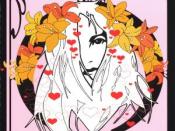A lifetime search for "why?" is often met with silence. Opinions, memories, and mementos become exhibits in a museum that doesn't exist, and as we grow we learn that many attempts to save those who force themselves to be doomed are often futile. This is clearly shown in the book "The Virgin Suicides". In this, a group of young, neighborhood boys watch 5 girls deteriorate into ghosts only to haunt them for the rest of their lives.
While the book specifically names several of these boys, it is unclear which one is really speaking. The narrator seems to take the shape of a general group of young males that are united by gender, location, friendship, and their fascination of the Lisbon girls. Though the story takes place at a young age, it gives the feel early on that the narrator is looking back after much time, thought, and consideration.
"We've tried to arrange the photographs chronologically, though the passage of so many years has made it difficult." (Pg. 4) The wide range of experiences that the narrator gives as a result of this provides the reader with a unique insight. The artifacts, found and analyzed throughout the story by various boys, are lumped into the collective knowledge in the hopes of gaining access to a truth about the Lisbon girls. The second paragraph on page 41 illustrates this.
The novel is continually concerned with the deterioration of the little life that has remained. The twenty years that have passed since the girls' suicides have affected the boys' precious archive of the girls' lives. Bras, makeup, photographs, tennis shoes, candles, and other trinkets have begun to stiffen, yellow, disintegrate, and fade. This physical deterioration parallels the gradual disintegration of the boys' memories, mental images, and sensory recollection...



The Virgin Suicides
Beautiful essay! You make your points very eloquently. This is one book I've never tackled, and your treatment of it makes me want to run out and buy it. So many essays about literature fall into the "object x is symbolic of idea y". It's refreshing to see one that manages to discuss theme and symbolism in such a fluid manner.
Keep up the good work!
1 out of 1 people found this comment useful.